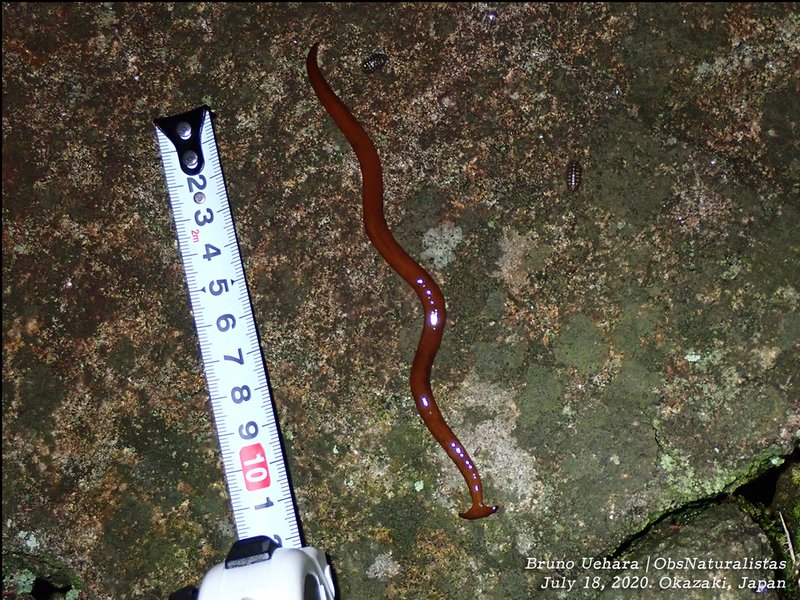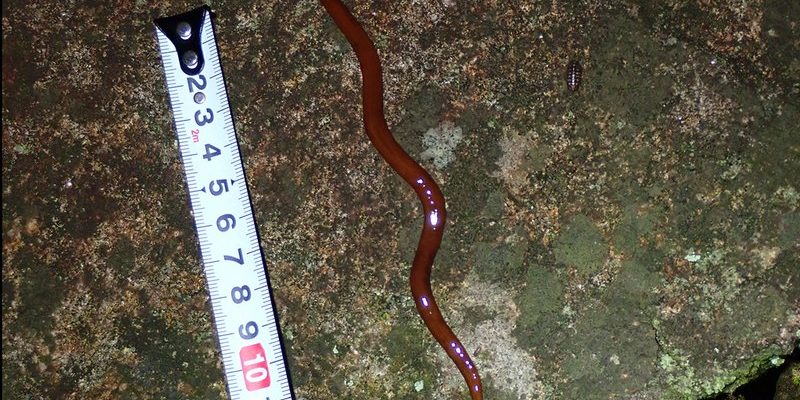
So, what really sets these creatures apart? Hammerhead worms, for example, are more than just another slimy thing on the ground. They’ve got a unique flat, shovel-like head that you won’t find on a millipede or a slug. Meanwhile, millipedes, with their many legs, are nature’s recyclers, while slugs bring a different kind of fascination with their soft, shell-less bodies. Let’s dive deeper into the world of these three creatures and see what makes each one special.
What Are Hammerhead Worms?
Hammerhead worms, part of the *Bipalium* genus, are known for their distinctive, flattened heads that resemble a hammer—hence the name. Growing up to eight inches long, these worms are often found in tropical and subtropical environments, but they can be spotted in other places as well. Their body is typically a dark brown or black, often streaked with lighter colors, making them somewhat striking against the ground.
Here’s the thing about hammerhead worms: they’re not just garden decorations. They’re predatory creatures that primarily feed on other worms, particularly earthworms. This makes them essential players in the ecosystem, though their presence may not always be welcomed by gardeners. If you see your garden soil getting a bit too empty, those hammerhead worms might be the culprits munching away on your soil’s natural workers.
Their method of hunting is also pretty interesting. Hammerhead worms secrete a slimy substance that can paralyze their prey. Once they’ve immobilized an earthworm, they essentially digest it outside their bodies by releasing digestive enzymes. It’s nature’s version of takeout!
Identifying Hammerhead Worms
Now, if you’re trying to figure out whether what you’ve encountered is a hammerhead worm or something else, look closely at the head. Its unique shape is a dead giveaway. Additionally, hammerhead worms move in a distinctive slithering manner, curling and waving as they go along.
When comparing hammerhead worms to slugs and millipedes, the body structure is a big tell. Hammerhead worms have a smooth, elongated body that’s generally more slender than a slug. Slugs, which are soft-bodied and often shiny, lack the distinct head shape. Millipedes, on the other hand, have a segmented body with noticeable legs on each segment, making them look quite different from their flat-headed counterparts.
If you’re unsure, a good rule of thumb is to examine the number of legs. Hammerhead worms don’t have any legs, while slugs have a very muscular foot section that helps them glide. Millipedes, with their many, many legs, are the true multi-taskers of the group.
Understanding Millipedes
Millipedes, despite their name meaning “thousand feet,” usually have a few hundred legs. They’re easily distinguishable by their long, segmented bodies, which can range from 1 to 10 inches in length. They’re typically brown or black, sometimes with a hint of color that gives them a striking appearance.
These little critters are primarily scavengers, feeding on decaying plant matter, leaves, and other organic materials. This diet helps recycle nutrients back into the soil, making them essential for healthy ecosystems. You might think of them as nature’s composters, breaking down dead plants to enrich the earth.
Millipedes also have a defense mechanism: they can release toxic chemicals that deter predators. If you happen to pick one up or disturb it, you might notice a foul odor or a mild irritation—just nature’s way of saying, “Back off!”
Identifying Millipedes
To identify a millipede, look for its many legs and body segments. Each segment typically has two pairs of legs, making them look like they’re wearing tiny striped pants. They tend to curl up when threatened or disturbed, so you might want to observe them from a safe distance.
As mentioned earlier, their movement is quite different from that of hammerhead worms or slugs. Millipedes move in a rhythmic wave-like motion, which is almost mesmerizing to watch. If you see a rounded body with lots of legs moving slowly across your garden bed, you’ve likely encountered a friendly millipede.
While they might look a little off-putting to some, they’re harmless and play a crucial role in maintaining soil health. So, if you find one in your garden, consider letting it hang around for a bit!
What About Slugs?
Slugs are another common garden visitor that many people can easily confuse with hammerhead worms or millipedes. These soft-bodied mollusks lack a hard shell, which gives them a unique appearance. Their body, usually shiny and moist, can vary in color from brown to grey or even yellowish, depending on the species.
Unlike the other two, slugs are herbivores. They feast on leaves, decaying plants, and fruits. You might spot them making a late-night snack of your precious garden greens. This can be frustrating for gardeners, but slugs do serve a purpose—they help decompose organic matter, recycling nutrients back into the soil.
One of the standout features of slugs is their tentacle-like structures on their heads. The longer pair acts like eyes, while the shorter pair helps with sensing their environment. That means they’re more in touch with their surroundings than you might expect!
Identifying Slugs
To identify a slug, look for its soft, squishy body gliding across your garden during moist conditions, especially at dawn or dusk. They leave behind a characteristic trail of slime, which can also help you track their movements.
Unlike the hammerhead worm’s clear head and the millipede’s many legs, slugs have a more amorphous shape. They don’t possess hard segments or discernible legs. Instead, their entire body is used for movement, giving them a smooth, graceful sliding motion.
If you spot a creature that looks like a rubbery tube moving along your garden bed, there’s a good chance it’s a slug. Just remember, while they can be pests, they also contribute to the process of breaking down organic matter.
Why It Matters: Understanding These Creatures
Distinguishing hammerhead worms from millipedes and slugs isn’t just an academic exercise; it has practical implications for your garden and the environment. Recognizing these creatures can help you understand better the dynamics at play in your local ecosystem.
Do you want to control pests in your garden? Knowing the difference between harmful and beneficial creatures can help you decide whether to let them be or take action. For instance, while hammerhead worms can threaten your beloved earthworm population, millipedes often contribute positively by enriching the soil.
Moreover, if you’re interested in gardening or even just enjoying nature, getting to know these unique animals enhances your outdoor experiences. You’ll start to appreciate the roles these creatures play.
So next time you see something wiggling in your garden, take a moment to observe it. Is it a hammerhead worm, a millipede, or a slug? Each has a story to tell and a role to play in the circle of life.
In conclusion, recognizing the differences between hammerhead worms, millipedes, and slugs can enrich not just your garden knowledge but your appreciation for nature as a whole. Whether you’re watching a hammerhead worm hunt, a millipede scavenge, or a slug sneaking a late-night nibble, you’re participating in the intricate dance of life that unfolds right at your feet. Embrace the curiosity, and next time you’re out exploring, you’ll know exactly who you’re looking at!

